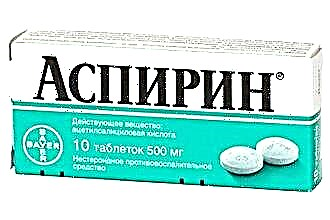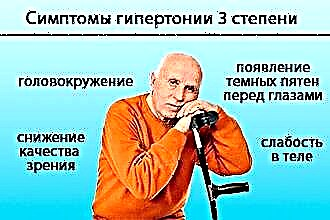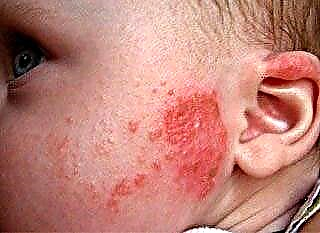It is rather difficult to give a quick and meaningful answer to the question of how to treat ear pain in a child. This is due to the fact that many of the drugs are toxic to the child's body. The doctor is faced with the task of prescribing an effective and safe remedy so that its effect on the body is characterized only by a therapeutic effect. Side effects must be minimized.
Specifying the diagnosis helps to prescribe the correct treatment. The same approach is relevant for solving the question of how to treat ear pain in a child. The presence of pain in this localization indicates the need for urgent consultation with a specialist. The pediatrician can only suspect this pathology. Reliably clarify the diagnosis, if necessary, only an otolaryngologist can conduct an instrumental examination of the patient.
Factors influencing the choice of treatment

Differences in treatment tactics and the choice of medication for ear pain in children are due to
- localization of the process, otitis externa or otitis media;
- the nature of the inflammation, catarrhal or purulent;
- the integrity of the tympanic membrane and the presence of suppuration;
- the severity of intoxication (degree of hyperthermia, general malaise).
How to treat an ear in a child with otitis media depends on the presence and nature of the exudate.
Catarrhal inflammation of the middle ear is characterized by the absence of exudate and the integrity of the eardrum.
In this situation, the use of any ear drops is allowed, since they will be safe. The anti-inflammatory, analgesic, antiseptic effect of ear drops will quickly normalize the situation. With caution, it is necessary to use only complex preparations or those ear drops that may be allergens.
The value of vasoconstrictor drops
The obligatory medicine for pain in the ear in a child, used for any form of otitis media, is a topical vasoconstrictor, nasal drops.
The use of nasal drops for pain in the ear is caused by edema and impaired patency of the auditory tube. It is this process that causes the development of otitis media. Local effect on the mucous membrane of the auditory tube contributes to a significant improvement in the condition in a short time. Such timely treatment is the prevention of the development of a more serious purulent otitis media.
The range of vasoconstrictor nasal drops is great. The most common means are Naphtizin, Sanorin, Tizin, etc.
When using vasoconstrictor drugs, you need to remember about the development of addiction to them.
The duration, frequency of administration and dosage must be agreed with the attending physician. In some cases, when the exudate is too viscous, to improve the patency of the Eustachian tube, it can additionally be blown with a catheter.
Ear drops
In its composition, ear drops may contain antiseptics, anti-inflammatory drugs, corticosteroids, as well as antibiotics and antifungal agents. Therefore, it is the specialist who must decide how to relieve ear pain in a child, the presence of which component is preferable in this or that case. Despite a significant range of ear drops with multidirectional effects, their use is possible only under the direct supervision of an otolaryngologist. This is due to the presence in the composition of components that are dangerous for the structures of the middle ear and cochlea. The use of such drugs for a perforated eardrum is contraindicated.
However, using ear drops for otitis media is a very effective treatment for pain. In order to determine how to treat a child's sore ear, it is necessary to analyze the clinical signs and especially the results of otoscopy. It is on the condition of the tympanic membrane that the choice of the drug depends and what should be used to treat the ears in children.
Purulent otitis media is divided into a pre-perforative stage and a condition when the pressure of pus formed in the middle ear cavity leads to a rupture of the tympanic septum. Otipax, Otinum, Sofradex, an alcoholic solution of boric acid are very effective agents that can, within a short time, cause an improvement in catarrhal otitis media or the preperfractive stage of purulent inflammation. These drops are applied 3-4 times a day in a heated state, instillation is carried out in 3 drops in each ear.
The presence of suppuration is an important factor for clarifying the diagnosis and determining the treatment tactics.
On the one hand, this symptom is an objective sign of the presence of purulent ear inflammation. On the other hand, the appearance of suppuration indicates the need to correct the treatment, since the agents used before may turn out to be toxic in this situation.
Antibiotic therapy
In the perforated stage, antibiotic-containing ear drops are effective.
With a hole in the tympanic membrane, they are able to exert a therapeutic effect on previously inaccessible structures of the tympanic cavity. As a local antibiotic therapy, drops Tsipromed, Otofa, Normaks have gained wide popularity. When using ear drops with antibiotics, it is necessary to ensure that they do not contain gentamicin and kanamycin, which are ototoxic agents.
In the absence of suppuration, only tablet forms of drugs can be used as antibiotic therapy. Taking into account the most common causative agents of this disease, amoxicillin and its derivatives are an effective antibiotic against this microflora. In children, this drug can be taken as a tablet, oral solution, or injection.
Antibiotic treatment should be continued for at least 7-10 days.
This is due to the prevention of the development of complications. Interruption of drug intake at an earlier date can lead to the transition of the disease into a chronic form or the development of other severe complications. A reduction in this duration can be observed only in children under the age of two months.
Paracetamol use
The priority pain reliever for ear pain for children is paracetamol. This is due not so much to the analgesic effect as to the safety of the drug for the child's body. Medicines such as aspirin or analgin have more pronounced analgesic effects, but their use is limited by significant side effects. The second drug of choice for pain relief is ibuprofen. These drugs are used more often inside, but in infants they can also be used in the form of suppositories or syrup.
Rest is essential for the successful management of pain patients. In most cases, treatment is carried out on an outpatient basis.
The child must comply with bed rest. However, it is recommended to avoid loud sounds and other irritants.
It is necessary to restrict the movement of the affected organ, for which they use a cotton turunda or a tampon, a cap.
In cases where the patient's condition has not improved after the perforation of the eardrum, the ear is still worried, fever, or additional symptoms have appeared, it is necessary to consult an otolaryngologist again. Perhaps we are talking about the complications of purulent otitis media and further treatment in a hospital ENT department.

 The presence of suppuration is an important factor for clarifying the diagnosis and determining the treatment tactics.
The presence of suppuration is an important factor for clarifying the diagnosis and determining the treatment tactics.

